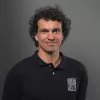I absolutly agree. I wrote about gentleman agreement. Right now it is believed highest pilot should give the way which is a problem...
Collisions and mid air increasing
Finally fellow contestant safety margin seems to have dropped significantly.
- Invert the gentleman agreement to leave way to upper pilot (they don't see down anymore).
- Read more about Collisions and mid air increasing
- 4 comments
- Log in or register to post comments
We are not the first airsport discipline to have the problem. Gliding had an accident rate at high level competitions that were 10x more than regular solo flying (see link below for the analysis). Would be interesting to do this level of analysis on the problems paragliding/Hang Gliding face https://www.fai.org/sites/default/files/documents/collision_risk.pdf







Comments
Organiser
There is no such thing as a regulatory rule to give right of way to gliders climbing below. The common and general rule is to "see and avoid".
US Federal Aviation Administration (FAA) in Regulation 14 CFR Part 91.113: "When weather conditions permit, regardless of whether an operation is conducted under instrument flight rules or visual flight rules, vigilance shall be maintained by each person operating an aircraft so as to see and avoid other aircraft. When a rule of this section gives another aircraft the right-of-way, the pilot shall give way to that aircraft and may not pass over, under, or ahead of it unless well clear."
EASA/SERA Section 3 Chapter 2: "Regardless of the type of flight or the class of airspace in which the aircraft is operating, it is important that vigilance for the purpose of detecting potential collisions be exercised on board an aircraft. An aircraft shall not be operated in such proximity to other aircraft as to create a collision hazard."
If one can see another one is too close and considers collision is possible, no matter the rights of way, he shall avoid the collision.
I we want the one below to be the responsible for a collision, fine. But it is not due the a possible right of way of the one above. It is due to the fact he could see and had to avoid the collision.
Common sense.